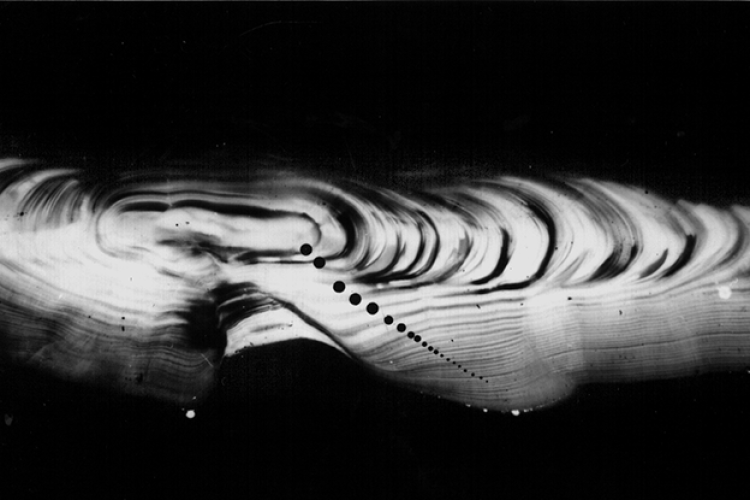Introduction
F.P. Almeida with J. Penttila, A. Jearld, Jr., and S. Clark
This version of the popular manual "Age Determination Methods for Northwest Atlantic Species" (NOAA Technical Report NMFS 72) edited by J. Penttila and L. Dery and published in 1988, represents an update of the original manuscript to include additional information gathered since its publication. It includes descriptions of updated equipment and methods and a few additional species. Original images used in the manual have been converted to digital format; new images were produced directly in digital form. The object of this report is to add to the excellent body of work previously completed and to update sections that have been changed, primarily due to technological advances. The 'science' of ageing fish has changed little in the short time since the original publication; advances in technology have primarily allowed age readers to do their jobs better and faster.
The ability to perform age determinations based on the examination of hard anatomical parts is of fundamental importance in fisheries research. Certain structures in finfish and invertebrates taken from temperate waters show alternating patterns caused by seasonal changes in growth rates; a phenomenon similar to trees for which an age may be determined by counting annual rings in a cross section of the trunk. Validation of a regular periodicity in these marks permits assigning a time scale and determination of age. The successful application of techniques to enhance the detection of age marks in biological specimens is of vital importance in estimating growth and mortality rates, population age structure, and other parameters needed for understanding the dynamics of fishery resources and their response to natural phenomena and exploitation.
A wide variety of age determination techniques have been developed for finfish and invertebrates which depend on the detection of contrasting bands in body parts such as scales, otoliths, fin rays, spines, and vertebrae of fish, as well as external and internal structures of mollusc valves. At the Woods Hole Laboratory of the Northeast Fisheries Science Center (NEFSC), such studies have been conducted since the 1960's and a considerable body of information has been compiled for a variety of Northwest Atlantic species. The purpose of this manual is to document the techniques used by staff at Woods Hole for researchers dealing with similar species and problems in other regions.
The Woods Hole Laboratory was established in 1885, although studies of age and related research were fairly limited in the early years. The Laboratory was closed during World War II, and significant progress on age research did not resume until the Laboratory was reopened in 1947 and the North Atlantic Fishery Investigation of the Fishery Biology Branch, U.S. Fish and Wildlife Service, was established. Groundfish resource surveys were initiated to investigate the biology and resource potential of various fish stocks, with age reading conducted within "species" investigations by project leaders and their scientific aides and technicians. Age determinations for most species, however, were sporadic and completed to answer specific research needs at the time, in contrast to a sustained production mode which has been characteristic of more recent years. Development and validation of techniques concurrently supported programs of the International Commission for the Northwest Atlantic Fisheries (ICNAF) which was organized in 1951 for the management of the groundfish fisheries of the Northwest Atlantic. Age determination studies conducted from 1951 through 1964 focused on haddock (Melanogrammus aeglefinus), redfish (Sebastes fasciatus), Atlantic herring (Clupea harengus), silver hake (Merluccius bilinearis), yellowtail flounder (Pleuronectes ferruginus), Atlantic cod (Gadus morhua), scup (Stenotomus chrysops), summer flounder (Paralichthys dentatus), winter flounder (Pleuronectes americanus), and Atlantic sea scallops (Placopecten magellanicus).
In 1965, species investigations at the Laboratory were consolidated into the Population Dynamics Program and a separate age determination unit was established. The work of the program involved collection of catch information, processing and determining the age of biological specimens, data processing, and research on vital statistics, yield, and population processes. The new Age Reading Unit initiated routine ageing of haddock and yellowtail flounder and conducted preliminary studies from 1965 to 1970 to develop and validate ageing techniques for species such as pollock (Pollachius virens), American plaice (Hippoglossoides platessoides), red hake (Urophycis chuss), and fourspot flounder (Paralichthys oblongus). Experiments with staining otoliths were also conducted. Some species (e.g., redfish and Atlantic sea scallops), however, were still aged by individual investigators in other units.
During the early to mid-1970's, many new techniques for preparing age structures were developed, e.g., thinsectioning and baking otoliths, and using laminated plastic for scale impressions. The number of species routinely examined for age determinations gradually increased through the 1970s to a current total of 18, and methods for an additional ten species have also been developed.
In 1978, the Fishery Biology Investigation (renamed Program in 1998) was created. Currently, the Program is part of the NEFSC, Fisheries and Ecosystems Monitoring and Analysis Division. The primary function of the Program is to provide biological information required for assessing the status of selected fishery resources, including population and fishery removal age compositions, mortality and maturation rates, growth and fecundity. Major emphasis, however, is on routine analysis of age samples, representative of commercially and recreationally important finfish and bivalve molluscs in the Northeast region. Current studies focus on growth analyses, age validations, development of new and more cost-efficient methods, studies of size and age at sexual maturity and changes in response to exploitation, and examination of daily growth increments on otoliths of larval and juvenile fish.
This manual describes methods currently in use for sample preparation and age determination of most finfish and bivalve species for which the Program has responsibility. The various techniques used for preparing anatomical structures are described, as well as criteria used to interpret growth patterns and assign ages. The age determination process consists of the following steps: collection of age samples, preparation of structures for age determination, examination, interpretation, assessment of the validity and reliability of the resulting data, sample and data archival. Most specimens examined are from samples taken during routine NEFSC research vessel bottom trawl and shellfish resource surveys and the commercial fishery from landings collected at dockside by port samplers or at sea by observers serving aboard commercial fishing vessels.
The first part of this manual contains general information on processing specimens for age determination and a glossary of terms. The remainder of the manual describes specific procedures developed for individual species. The species descriptions include information on biology and distribution; former studies of age and structures used for age determinations; sample preparation, methods of examination, sample archival, and descriptions of growth patterns and problems related to age determination.
Acknowledgments
[The original authors expressed their appreciation to Louise Dery and Jeffery Darde' for their superb photographic work for this manual. The assistance of Kathleen Braga and John Ropes with the photography was also appreciated. Special thanks were extended to Steve Clark for his extensive and invaluable assistance in editing and guiding the evolution of this manual. The editorial comments of the late John Ropes were also appreciated. Thanks are also due to Ambrose Jearld, Jr., who originated the idea for the project.]
The updated version of the manual involved the assistance of the 'new' members of the Fishery Biology Program (indeed, only one of the original section authors still works in the Program). The assistance of Jay Burnett, Christine Esteves, Richard Greenfield, Blanche Jackson, Kathy Lang, Nancy Munroe, Nina Shepherd, and Vaughn Silva are greatly appreciated. These individuals reviewed the original species sections of the report and updated them with new information and figures. Ruth Haas assisted us in the preparation of new digital images and Brenda Figuerido scanned all of the glossy photographs into digital form. Special thanks go to Edgar Kleindinst, our webmaster and network guru. Without Edgar's knowledge and patience this update would not have been possible.



